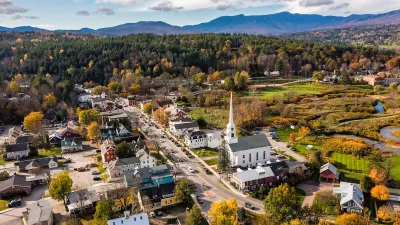As the effects of humans accelerate the changes occurring on the planet, landscape architects and planners alike will need to take into account ways that civilization can adapt to a lack of stability.
Brent Milligan writes a refreshingly accessible academic exploration of landscape migration—the process by which environments shift and change. Landscape migration is accelerated by the impacts of human civilization (as evidence of theAnthropoceneera) and landscape architects are beginning to "focus their practice on designing for adaption to change," as Milligan describes it.
Milligan opens the essay up by acknowledging that the commonly accepted definition of the word migration is too small—pertaining only to the movement of humans and animals.
The problem with that definition, according to Milligan: "We know that environmental conditions are always changing, but we allow ourselves the fiction of background stability. When we limit our thinking in this way, our political and design responses are circumscribed. (Allot water rights. Designate a wildlife refuge. Build a wall.) Not surprisingly, they often fail."
With a new definition of migration in place (i.e., " patterned movement across space and time"), Milligan examines several case studies for the implication of this to landscape architecture practice. Case studies include the Klamath River in Oregon and California and the salmon habitat destroyed by engineering of the river for water supply, the "Sand Engine" in Buckhorn City in the Rotterdam-Hague region of the Netherlands, the migration of the Mississippi River throughout the Mississippi Basin, and shrinking cities such as Detroit.
FULL STORY: Landscape Migration

Alabama: Trump Terminates Settlements for Black Communities Harmed By Raw Sewage
Trump deemed the landmark civil rights agreement “illegal DEI and environmental justice policy.”

Planetizen Federal Action Tracker
A weekly monitor of how Trump’s orders and actions are impacting planners and planning in America.

Why Should We Subsidize Public Transportation?
Many public transit agencies face financial stress due to rising costs, declining fare revenue, and declining subsidies. Transit advocates must provide a strong business case for increasing public transit funding.

Understanding Road Diets
An explainer from Momentum highlights the advantages of reducing vehicle lanes in favor of more bike, transit, and pedestrian infrastructure.

New California Law Regulates Warehouse Pollution
A new law tightens building and emissions regulations for large distribution warehouses to mitigate air pollution and traffic in surrounding communities.

Phoenix Announces Opening Date for Light Rail Extension
The South Central extension will connect South Phoenix to downtown and other major hubs starting on June 7.
Urban Design for Planners 1: Software Tools
This six-course series explores essential urban design concepts using open source software and equips planners with the tools they need to participate fully in the urban design process.
Planning for Universal Design
Learn the tools for implementing Universal Design in planning regulations.
Caltrans
Smith Gee Studio
Institute for Housing and Urban Development Studies (IHS)
City of Grandview
Harvard GSD Executive Education
Toledo-Lucas County Plan Commissions
Salt Lake City
NYU Wagner Graduate School of Public Service





























